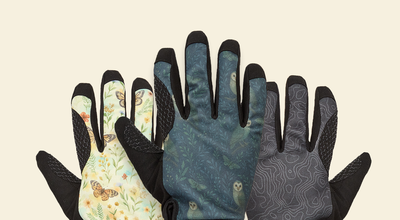How to Grow with No-Tilling Gardening
When we think of gardening, we often think of kneeling and bending, with one hand on the ground, digging. Indeed, if you’re planting things in the background, you must be digging to some degree. Naturally, there’s some level of digging involved. We’ve all got to get our hands a little bit dirty.
But to what degree?

No-Tilling
A common approach to gardening, if you are not planting with containers or a vertical garden, is tilling the ground and planting beds from there. This is an excellent approach to a large area or an entire yard-turned-garden. Tilling a garden requires constant digging; between every crop and season, the ground will need to be turned so weeds don’t have a chance to take root and eventually take over.
So what brings us here today is to imagine a world without the need for constant tilling, where weed overgrowth can be resolved with no-till gardening methods.
Let’s think about this all from a naturalist’s point of view. Mother Nature has never used a spade or hoe, and look at her garden, and it’s immaculate.
So what’s the secret?

Do What Nature Does
If you’ve ever wandered through a dense forest, you might notice all the leaves or pine needles covering the ground, and if you’re ever dug through this cover, you’d see there is mostly just dirt underneath. A similar method can be used in your own yard. This can be done with readily available cover from leaves and wood chips. This method is excellent for boosting the health and vitality of the soil.
This method was popularized by Paul Gautschi in his “Back to Eden” method.
Here’s how the method breaks down into a bed:
- Lay a thick layer of paper or cardboard over the cleared ground.
- Add a few inches of compost, then add a layer of wood chips about two inches deep.
- Once you’re ready to plant, push aside the wood chips and plant into the compost beneath.
The main idea in all this is to mulch but not dig.
Through continuous mulching, the soil underneath the mulch cover becomes soft and nutrient-rich—not to mention weed-free.
For this method to work correctly, mulch needs to be added continuously. This can be done either at the end of a harvest, or mulch can be placed around the base of plants as they grow. If done correctly, there will be few weeds, and the soil around the plants will capture nutrients and retain them without suffering from the effects of erosion.

Here’s what this process looks like when starting from scratch.
Don’t worry; even if you’re starting your garden from scratch, there’s still no need to dig.
Here are the steps:
- Clear the surface of debris and rocks
- Mow down grass or cut back weeds
- Add a thick layer of well-rotted organic matter such as compost or manure (4-inches wide)
After a few months, the earth and the worms will begin to do their thing.
If where you plan to garden is heavily covered in weeds, you can also use cardboard to clear the area. Placing cardboard down and wetting it deprives all the plants underneath it of light and air to grow. After a few months, any leftover weeds are easy to remove.
Maybe you’re asking, what constitutes mulch?
Mulch can be made up of a variety of things.
Including, but not limited to:
- Compost
- Leafmold
- Hay
- Woodchips
- Grass clippings
- Straw
- Sawdust
Make sure that your mulches DO NOT include weeds or seeds, as it will defeat the purpose—more on this in our post about making your own gardening soil.

What is the limit to this no-tilling?
There really isn’t one. The no-till approach is suitable for gardens of all sizes. Everything should work fine if the beds are somewhat narrow and you don’t need to step on into the beds.
And what if you’re not digging directly into the ground and want to use a bed?
The no-till method works even better in this scenario. Because the sides of the raised bed actually work to keep all organic matter together.
This method is tried and true. So good that we wonder why anyone would ever want to dig again! Give the method a shot, and let us know how things turn out for your garden this coming season.












